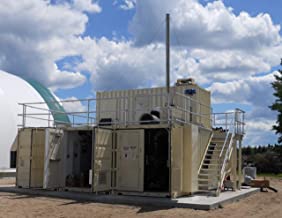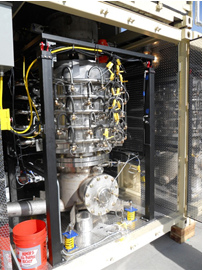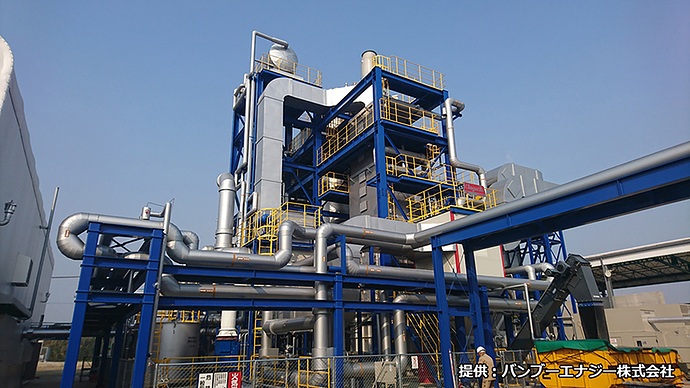I think i understand how this works and if you have ever made charcoal in a cone then you will understand why he needs to fill it with charcoal first .
He does not want any hot burning coals close to the auger at all so he fills way above and then sets his wood alight at the top , the only place there is oxygen , and once the flames die down he then tops off with more wood and augers out a small amount of cold dry charcoal leaving just enough room for the next level of wood and so on , if there were air holes anywhere other than right up at the top then this would not work as the only place for cooking the wood to charcoal is right at the top , and all the rest is just a cooling off zone all the way down to the auger .
If i’m wrong then its because i have only ever watched the video of this a few times over the years , but i am making charcoal in roughly the same way except my vessel is a large cone with out a auger , mine holds about 150 gallons of charcoal , but to even get it half full takes a fair few hours of constant feeding and when its time to leave it i lift a air tight lid onto it and leave it till the next day to tip on side and shovel out into smaller containers .
Dave
I do wonder about the time required to snuff the charcoal. Clearly in operation the bottom of the unit has to be devoid of oxygen. So the only question then is to get the charcoal particles safely below the auto combustion point. The auger may even serve in the cooling process.
I have used a 5 gallon TLUD, when done burning the 2 1/2 gallons or so of glowing char go into an airtight tin. In roughly 10 minutes the char is safely snuffed. In the tin I expect the cooling goes very fast, because there is convection space, plus surface area to radiate heat. In the bottom of the continuous system cooling will be tougher, only to the outside, so will require more time and depth. Unless a person got very elaborate and installed cooling tubes along the ash cone angle feeding into the auger, that would recover heat that could be fed back into the combustion zone.
I would like to shove a 1/4" steel rod down through the top of this auger unit after it is operating for 30 minutes or so and then pull it out and read the temps at various heights to see at what depth the charcoal is extinguished enough to auger out. I think we would be surprised to see how well this works.
That’s the most practical approach. Given that the inner vessel appears to just be a standard hot water tank, random dimensions, I’m sure there’s room for improvement.
Hi Jef,
we might have to adjust your angle on this 
I suggest you come over, we have a few chat’s about charcoal, go over and see that building for ourselves, and chat some more over our findings… might even find some time to build a Jeff’s style Thai Charcoal gasifier…
I think you pretty nailed it…
Anyone building this design already ?
Made a drawing yesterday. Without drain and pipes connected on top. Airholes not sure how far from the end.
Auger will be 80 mm/ 3 inch in 120mm 4,5 inch pipe. Hand driven.
Also very curious if someone has experience with it.
i copied paste the info from youtube:
" Design details: It is made out of a roughly 40 gallon propane turned vertical with the top cut off and a 60 gallon pressure tank with top and bottom cut off. The pressure tank is placed over the propane tank to act as a heat shroud. Air is drawn by convection from the bottom between the two tanks and travels toward the top. 9-10 inches from the top of the inner tank there is a series of 1" holes allowing some of the air into the inner tank under the wood, thus burning the wood. The rest of the air is allowed to escape out the top between the two tanks, thus supplying the secondary air to burn off the smoke. The coals that form fill the center tank and are gradually lowered down as the charcoal on the bottom is augered out. As the coals are lowered they drop below the holes where the air is introduced. Thus, deprived of O2, they too cool off by the time they are augered out of the bottom of the center tank. For more information, this unit is featured in a book with more information and pictures of a tear down. The book “Make Smoke Burn Smoke” is available here: http://www.brushapes.com/2016/02/make…"
Top! Thanks Koen. Garry’s drawing is correct then, primary and secondary air inlet.
The link doesn’t seem to work. After my boiler room is ready, this is the first project. Charcoal will be used for filtering exhaust gasses and if changed, they can be gasified. Looks like everything is coming together after some years. Finally, it is about time too. 0.85 cent for m3 natural gas. About time to keep my own pants up.
Biomass gasification is a thermochemical process by which solid biomass is converted to a synthesis gas (syngas) primarily composed of carbon monoxide, hydrogen, methane, and non-combustibles (carbon dioxide, nitrogen, and water vapour). The gasification system (BioMax100) featured in this component consisted of a fixed-bed downdraft gasifier operating between 800 and 900°C. The BioMax 100, developed by Community Power Corporation (CPC), was installed at Pineland Forest Nursery in Hadashville, Manitoba. Pineland produces high quality seedlings for silvicultural plantings in central Canada and the northern United States. Dry wood chips were fed from the top of the gasifier, and as they slowly moved down the gasifier, they passed through a drying zone, a pyrolysis zone, a gasification zone, and a char oxidation zone. The volatile gases in the pyrolysis zone and water vapour released in the drying zone moved downward under suction and reacted with the biomass charcoal and injected air according to gasification and water-shift reactions. The air was injected via hundreds of injection points throughout the gasification bed, and was tuned to finely control the temperature profile within the gasifier for maximum conversion of tars into gaseous products. The syngas generated in the gasifier was then cooled, filtered, and blown into twin reciprocating engine-generators to generate combined heat and power. Heat was delivered to a 200,000 L hot water storage tank, which had been integrated into the system and acted as a buffer tank between the BioMax100 CHP system and Pineland’s hot water distribution network.
The BioMax100 was online and generating electricity for 488 hours between April, 2013 and March, 2014. The system was capable of generating a net 100 kW of electricity and 120 kW of thermal energy. The longest period of continuous generation achieved was 22 hours. 18,155 kWh of electricity was generated to offset Pineland’s demand.
A variety of operational issues prevented the BioMax 100 demonstration from operating on a continuous basis. Some issues were overcome through troubleshooting and improving operational, maintenance and control processes. Other issues, such as the blockages in the feedstock handling system, are still ongoing and will require a reduction in the variability in the biomass feedstocks, and design or setup changes. Further development of the BioMax100 would be necessary before the technology could be relied upon for consistent generation of heat and power from wood chips.
CPC BIOMAX 100 480V-AC 3PH 100KW Modular Biomass Gasification Generator Set
by COMMUNITY POWER CORPORATION
$131,798.14
- $8,237.38 estimated tax


Sawdust , When you have sawdust and a government will pay $52.5 million to build you a power plant .
mltcbioenergy.ca
The organic cycle turbine is run unattended for decades in the worlds harshest conditions , and it is expensive .
A gasifer fed internal combustion could be more efficient . Surely less expensive if you can keep it running .
I am looking at building a continuous charcoal maker a bit smaller than the original idea. I would like to have something that can run steadily to provide winter heat for a shop building etc. I think for the unit described to be capable of producing 5 - 7 gallons of charcoal per hour it will be consuming 8 to 11 gallons of wood chunks, a huge amount of heat.
A 100 lb north American style propane cylinder is roughly 14" diameter. A 40 gallon hot water tank is roughly 18", so it will serve as the heat shroud. This size should have a fuel consumption perhaps half that of the larger unit. The steel will be thick enough to last a fair while in continuous use as a heating device. Cooling of the charcoal should be more efficient through the walls. I envision a refractory lined chamber to burn the gases efficiently, followed by a heat exchanger.
The main holdup I have is with the auger. Roughly 3" diameter should be right. I may have to build an auger. Designing the auger flights comes down to trial and error to a certain degree.
Probably work along these lines:
Ha ha. Unbelievable what some people make out of nothing. Here is a factory nearby. Can t make it for that money. Take a look at transportschroeven.nl. I can fix you a dxf if you want to make it the same as youtube. Must be a factory around you too. Otherwise I will trade some against Mr Waine book. No export of that to Europe anymore.
Koen, that would be a blast ! ! !
Not the case here. There may be a specialized manufacturer in the next large city 240km away, but for sure they would want a very special price. That’s the difference in north America, very spread out population and long supply chains, many starting in China…
About the best I could do economically would be to find some 1950’s combine to scrap, or some random piece of industrial equipment. I will be able to get by making a series of experimental templates for the flights in heavy paper until I get the right pitch and diameter. But unfortunately this represents as much work as the rest of the project, otherwise I would have done it long ago.
https://www.transportschroeven.nl/bestel.html
Sorry. Go to tab “bestel”. Just of the shelve. I have several. And no joke , it will be send to you. Don let that hold your project. I think I have some 80 and 130 big pitch (spoed) here from the pellet time. Won t mis a few meters.
Hi Garry
your continuous heating / coal project fascinates me
I can’t wait to see how you will solve the wood feeding and BTU capture
the augers are frequent in the scrap yard that I visit on the occasion. maybe you should take a look at it. I find, almost on each visit, treasures 
Garry, most people here own an ice-drill for winter fishing. Don’t you?
It should do for an auger, right?
I do, but one is 8" and the other is 6. I am thinking more along the lines of 4 at most, and don’t want to sacrifice an ice auger for a project… 
It forgot everything is bigger over there 

